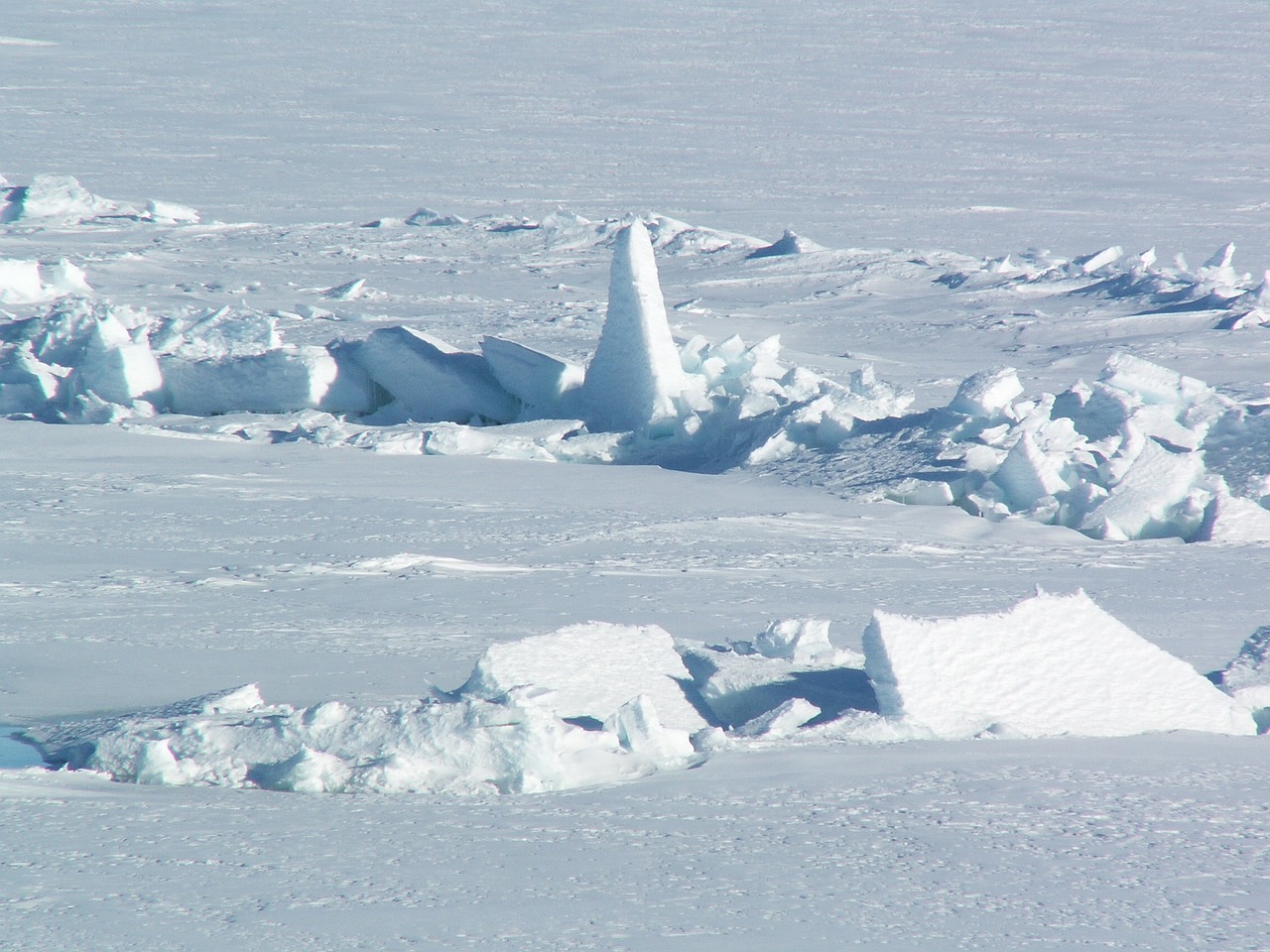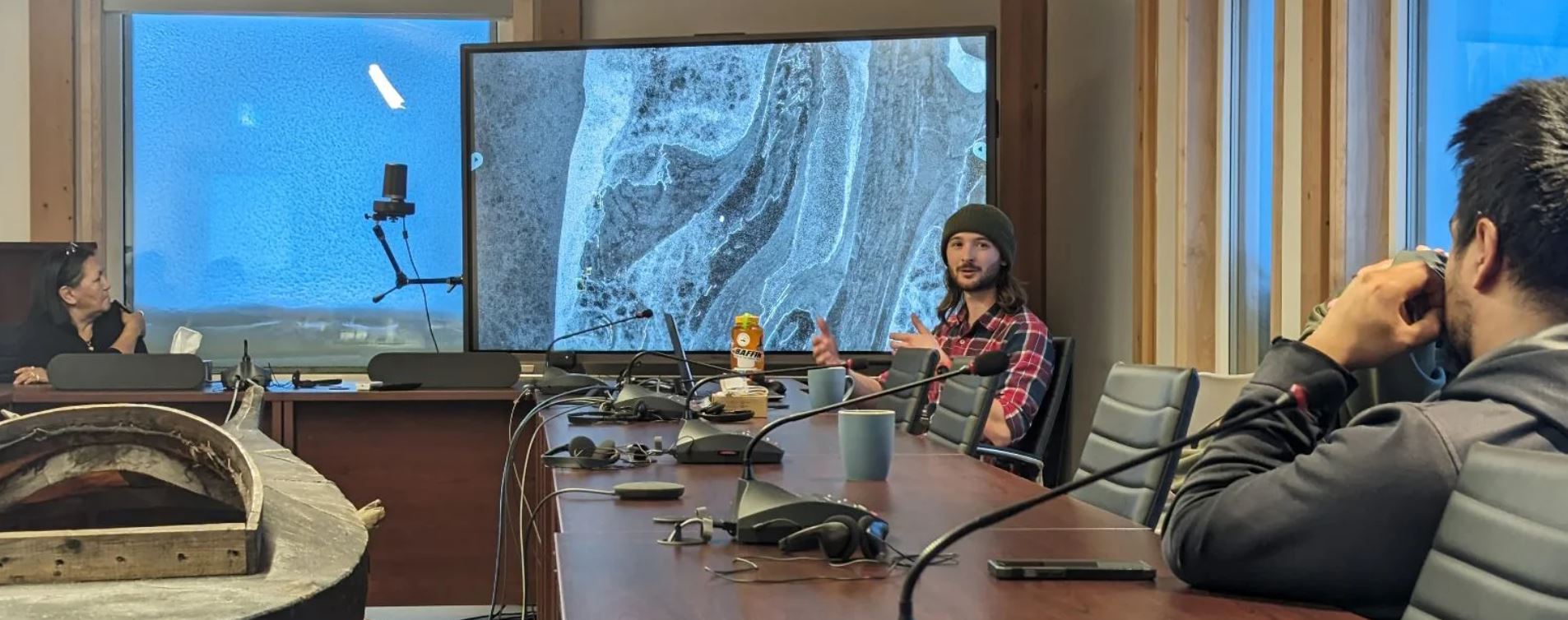
ΑΙhub.org
Combining Indigenous knowledge and AI to support safer on-ice travel

By Val Maloney
Warming temperatures mean shorter ice seasons in Sanikiluaq, Nunavut. As a result, the stretches of landfast ice formed from frozen seawater that Inuit use to travel and hunt on are increasingly unpredictable and unsafe.
Polynyas, areas of open water and thin ice, occur where ocean currents or wind prevent pack ice from forming. They’re typically found in the same locations each year enabling travellers to plan their routes safely. But climate change is affecting this predictability, causing smaller, unexpected polynyas that make travelling across the pack ice risky.
To address this issue, the Sanikiluaq-based Arctic Eider Society (AES), a charity organization that facilitates indigenous-driven solutions for communities across Hudson Bay and Inuit Nunangat — the homeland for Inuit in Canada, has partnered with the University of Waterloo’s Vision and Imaging Processing (VIP) Lab to leverage artificial intelligence (AI) and make on-ice travel safer with accurate and timely data on polynyas easily available.
Using data validated by local Inuit, the lab has developed machine learning models to identify potentially hazardous open-water areas in landfast sea ice using synthetic aperture radar (SAR) imagery taken by polar-orbiting satellites flying 700 km above the Earth. Using SAR imagery is advantageous for sea ice monitoring because it allows for visibility through areas of clouds and darkness. The imagery is then combined with local knowledge and recent observations of ice conditions shared on the Indigenous Knowledge Social Network (SIKU), a community-driven mobile app and web platform developed by AES.
“While conditions have always changed each year, the ice season has now shortened and community members are reporting other effects like thinner ice, new polynyas, more slush and especially more variability in the ice conditions,” says Becky Segal, maps manager for SIKU. “So people across the Arctic are already using SIKU for ice information. Working with the VIP Lab team means we can enhance the quality of that information even more.”
The VIP Lab caught the AES team’s attention thanks to its reputation for using AI to analyze digital images and identify selected subjects with speed and accuracy. Recent Waterloo Engineering graduate Neil Brubacher (BASc ‘21 and MASc ’24) led the community sea ice safety project as part of his thesis under the supervision of Dr. David Clausi, co-director of the VIP Lab and a professor of systems design engineering, and Dr. Andrea Scott, associate professor of mechanical and mechatronics engineering, with support from the Mitacs Accelerate Indigenous Pathways program.
The project kicked off with the VIP Lab team, AES and SmartICE — a community-based organization that supports Inuit-produced, data-driven information products related to local sea ice travel conditions — working together to build a dataset of polynyas to train machine learning models to identify specific risks in sea ice.
Using SAR imagery to automate sea ice and open water detection is a well-established research field that supports commercial activities like shipping route navigation. The VIP Lab and AES project is different because it focuses on the identification of small polynyas to benefit communities.
“Our work’s novel research angle is that it looks at the very small size and sparsity of these landfast ice polynyas in the SAR imagery,” says Brubacher. “It’s a bit of a needle in the haystack problem but we’ve achieved a 90% accuracy rate and are working to improve precision.”
One of Brubacher’s project highlights was visiting Sanikiluaq to discuss the research with the community.
“Being there in-person and hearing first-hand the incredible depth of knowledge around sea ice, weather and travel safety practices was crucial to the project’s success,” he says. “The local insights and experiences gave me the context I needed to better understand the interface between our system and the community.”
And, after examining them for two years on his computer screen, Brubacher finally got to see real polynyas. He felt the effect of climate change too with temperatures sitting around –5 C, a far cry from the region’s typical –20 C in January.
 Neil Brubacher presenting his research to the AES team in Sanikiluaq.
Neil Brubacher presenting his research to the AES team in Sanikiluaq.
“I heard Inuit say that ice that used to be predictable isn’t as predictable anymore,” says Brubacher. “But I also met people who are optimistic about adapting to these changing conditions with a desire to develop effective digital technologies that can complement local Indigenous knowledge. Deriving community-prioritized information from remote sensing imagery is one example of this.”
The VIP Lab’s models are applicable to coastal communities across the Arctic and the team continues to investigate ways to combine machine learning and local knowledge to create the most effective community-driven information products.
“We hope to continue working with the VIP Lab,” says Segal. “There are a number of future projects that they could help us with including wildlife counting for several species important to Sanikiluaq, like the Eider duck.”








